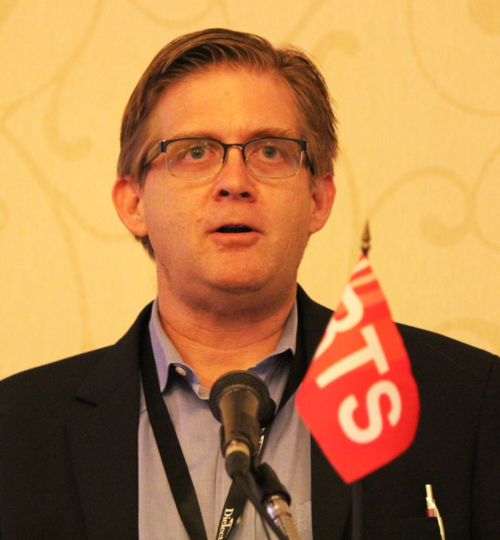IEEE BTS Explores Changes in Audio Technologies

The first day of the IEEE Broadcast Technology Society’s 68th three-day Broadcast Symposium drilled deeply down into emerging “disruptive” technologies as they affect the broadcast platform.
INVASION OF THE SMART SPEAKERS
Heading the list was the rapid rise of “smart speaker” technology and their deployment in the consumer environment. In his presentation “The Broadcaster’s Place in the Smart Speaker Ecosystem,” the NAB’s Senior Director of Technology, Education and Outreach Brian Savoie noted that even though smart speakers were launched only about three years ago, their acceptance and popularity is really unprecedented.
[Read: IEEE BTS Fall Broadcast Symposium Gets Down to Business]
“The adoption rate has been very rapid,” said Savoie. “It’s likely to be faster than that of any other consumer device in history.”
He noted that the smart speaker is becoming a gateway for connecting with many services that consumers routinely use, and advised broadcasters that “Alexa is coming to the car” and they needed to make plans to get on that platform. “A hybrid voice-controlled radio was demonstrated at the Orlando Radio Show a couple of weeks ago. It’s coming.” He added some broadcasters could already be ready without knowing it. “If you’re streaming, you may already be on the platform.”
SPECTRUM SHARING, 5G, PIRATE BROADCASTERS, AND MORE
Get the TV Tech Newsletter
The professional video industry's #1 source for news, trends and product and tech information. Sign up below.
First-day “disruptive” presentations ran the gamut from methodology for sharing of 2025–2110 MHz spectrum between the U.S. Department of Defense and television ENG crews to 5G wireless broadband technology and its possible impact on conventional over-the-air broadcasting. Hybrid over-the-air/internet broadcasting was also on the radar, with one presenter providing information on initial testing of methodology for transmitting not only sight and sound, but also smell, taste, and touch content to provide a completely immersive experience.
Even the first-day luncheon keynote address followed through on the theme with a slightly different aspect of disruptive technology — the concept of storytelling — with Dolby Laboratories’ Chief Scientist Poppy Crum, describing how new and changing media technologies have the potential to change the way storytellers interact with their audiences, and even the storytelling methodology itself.
Activities wrapped up with a presentation on “Pirate Radio and FCC Enforcement” from Charles Cooper, director of the FCC’s Field Division of the Enforcement Bureau. Cooper stated that enforcement of pirate operations has a very high priority at the FCC, and noted that during the past year, 242 notices of unlicensed operation had been issued, and that the highest possible monetary penalty had been issued in the case of a Florida pirate operation.
“We also referred several cases to the federal courts for equipment seizure,” he said.
The conference continues on Wednesday with sessions on AM/FM digital-only broadcasting, ATSC 3.0 and UHD television, and connected car radio.
James E. O’Neal has more than 50 years of experience in the broadcast arena, serving for nearly 37 years as a television broadcast engineer and, following his retirement from that field in 2005, moving into journalism as technology editor for TV Technology for almost the next decade. He continues to provide content for this publication, as well as sister publication Radio World, and others. He authored the chapter on HF shortwave radio for the 11th Edition of the NAB Engineering Handbook, and serves as editor-in-chief of the IEEE’s Broadcast Technology publication, and as associate editor of the SMPTE Motion Imaging Journal. He is a SMPTE Life Fellow, and a Life Member of the IEEE and the SBE.

